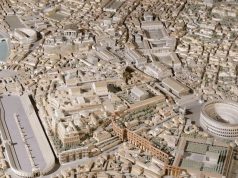Literally, disasters waiting to happen
Buying a house, sure is a milestone for a person’s or a family’s life. The whole process can be amazing, especially if you get to build the house from scratch. And when you do built it (that is, when the company does) you think that’s it. You can live there, indefinitely, incredible professionals have guaranteed for it’s safety and the only way this modern fortress can meet the ground is if you choose to demolish it.
Well that is not true at all cases. As evident by our list below. A list compromised by pictures gather by Alpha Structural, Inc.
A structural inspection company that keeps records of the weirdest and most dangerous things they have found during their work.
“There are many factors that can affect the repair of a home such as budget constraints, timing, accessibility of workspace, etc.,” said Ben Reinhart, a representative of the company in an interview with Bored Panda. “For the most part we would put the responsibility on the contractors that were hired to do the work.” According to Ben, most homeowners don’t know the methods of repair used and says they’ve seen some pretty shoddy craftsmanship used to repair peoples’ homes.
“Basic maintenance will keep your home strong for a long time to come. Our advice would be to clean out gutters, ensure you have downspouts that direct water away from your foundation and see that the hardscape (walkways, patios, etc.) and landscape grade away from the home. Most foundation problems are caused by water and poor drainage,” advised Ben. “Not only will moisture from the ground get to the wood and cause rot, it also allows for wood destroying organisms to get to the framing of your home.”
#1

Image source: AlphaStructural
This is an old turntable used for cars back in the day. Some also may call this a Lazy Susan! It was used for cars back in the late 1800’s to early 1900’s for easy access and movement. Cars back had a bigger turning radius so they had the turntable to help out.
The build date and fabrication number was stamped into the center of the steel. You can see that the turntable was built on Dec 11th, 1917. This thing was discovered while doing an earthquake inspection for a large industrial building in DTLA.
#2

Image source: AlphaStructural
Image 1: This was a column on a soft-story retrofit project we have in Los Angeles. As you can see, the column has rusted to a point that it has become very brittle and weak. At the time this was discovered, emergency shoring was put into place for additional support.
That very same night, the Ridgecrest Earthquake happened. A 6.4-magnitude earthquake struck Ridgecrest, California, some 100 miles away from Los Angeles.
Image2: Once we came back to the property the very next day, we noticed the entire column had snapped in half due to the movement from the quake! If we hadn’t installed that additional shoring, the unit above may have met the ground…
#3

Image source: AlphaStructural
This was a retaining wall being held up by a chain…
I would recommend walking on the opposite side of the road.
#4

Image source: AlphaStructural
We’ve seen a few dolls under homes before, but this one may take the cake on the creepiest one so far.
#5

Image source: AlphaStructural
This had to be the first image because it is by far my favorite this week. The absolute definition of a “DIY” project. This entire crawlspace was filled with tree branch posts, many of which were resting upon rocks and logs. I like to think it’s just a person’s bad hiding spot in a game of prop hunt. This one will fall some day. I will keep you posted.
#6

Image source: AlphaStructural
A hillside deck with some inward leaning posts. I would not want to be that guy up top.
#7

Image source: AlphaStructural
When you gotta go… you gotta go
#8

Image source: AlphaStructural
Somebody has some serious Jenga skills!
#9

Image source: AlphaStructural
This is the result of the Kool-Aid man failing to break through…
But on a more serious note, this is a brick wall that had no reinforcement on either side. Over time, the weight from above caused the bowing of this wall. The earth below was actually quite sturdy but the rest of the home wasn’t.
There was also some dirt on the other side, which caused the wall to bow inward as opposed to outward. We like to call it an inverse surcharge.
#10

Image source: AlphaStructural
Sometimes the access points to these crawlspaces can be a bit rough…
#11

Image source: AlphaStructural
We found some vintage… booklets in the crawlspace of this home. No, we did not take them and sell them to collectors.
#12

Image source: AlphaStructural
This was an old 1900’s apartment building that was being held up by some less then effective stud supports. You can see the newer members to the right and left of the original support. They had to trim down the newer ones to compensate for the sagging that was caused by the originals. Scary stuff.
#13

Image source: AlphaStructural
This was the skull of some very large animal we found under a crawlspace. It isn’t just a normal rat or opossum skull as it was the size of a basketball. My guess would be some sort of alien (such as E.T.) or a Silver Back Gorilla, but I’m not too sure.
#14

Image source: AlphaStructural
Yes, that is a stone acting as a concrete pier for the post. *Insert joke about the post being stoned here*
#15

Image source: AlphaStructural
MDF, or Medium Density Fiber Board, is used in a lot of furniture and aesthetic pieces. This type of material should NOT be used for anything structural. A lot of the time it isn’t treated well for moisture or natural elements. This is what happens when it becomes exposed to water over a short period of time… it will begin to fray out and decay. It looks like mold, but it’s actually the wood fibers being pulled apart due to moisture. Don’t use MDF for your structural work!
#16

Image source: AlphaStructural
This was a massive sinkhole that opened up in the back of somebody’s property. The pictures don’t show it well, but the hole is 12′ deep and about 6′ wide. At the bottom you can clearly see an old clay pipe from the city. It hasn’t been used in many, many years. It was thought to be an issue involving a septic cap. It’s possible the cap caved in to the tank and caused this massive hole to open. This thing was scary to stand next to in person.
#17

Image source: AlphaStructural
An older pier that wasn’t even in contact with the post above. This would normally cause some dipping in the floors over time.
#18

Image source: AlphaStructural
This was a hillside deck that had rotted and been damaged by termites over many years. The result is a decayed, unstable and leaning deck that is ready to slip.
#19

Image source: AlphaStructural
Here we have a classic garden wall with improper footings and tie-ins to the other wall. It could also be the result of a “surcharge.” A surcharge is the result of pressure being built up against a surface, usually caused by the settlement of nearby structures, such as a house. I put that in layman’s terms so don’t yell at me for not being technical.
#20

Image source: AlphaStructural
This is a post that had been spliced together with another random piece of wood. Why somebody would do this is beyond me.
#21

Image source: AlphaStructural
Lean with it, rock with it!
#22

Image source: AlphaStructural
We also specialize in soft-story retrofits. These are under a mandatory ordinance by the city of LA and many other surrounding cities. We were called out to inspect and correct a recently completed project done by another company.
This was the actual finished product by this other group… Now, we have been doing these retrofits since before the city ordinance, but many companies jumped on the bandwagon to make a quick buck. This is the result of a “quick buck” job. The cheapest isn’t always the best option folks.
#23

Image source: AlphaStructural
And here we have the entrance to the next level of Super Mario Bros. It doesn’t actually go through the foundation wall, though by the looks of it, that wall could be easily broken apart. The whole foundation needs to be replaced. Very brittle.
#24

Image source: AlphaStructural
Those nails are doing a great job holding nothing together.
#25

Image source: AlphaStructural
If you go around East Los Angeles, you’ll see this sort of crack in retaining walls on almost every single block. These homes in Silver Lake, East LA, Mount Washington, etc. are all on a moving land mass and when mixed with water and quakes, it makes for a good damage sandwich.
#26

Image source: AlphaStructural
As I was thinking of what to say for this caption I forgot there was a plastic skeleton and giant skull to the left and felt any other comment besides mentioning those would be a disservice to you guys. But the post is a bit wonky too.
#27

Image source: AlphaStructural
Would you feel safe with framing like this holding up your home? Me neither.
This is pretty common in older homes around Los Angeles. Years of water damage and those pesky termites will eventual cause some pretty bad rotting and instability.
#28

Image source: AlphaStructural
Uneven flooring? Here’s your issue. Earth to wood contact. That’s just asking for wood rot and termite infestations.
#29

Image source: AlphaStructural
To the untrained eye, this may seem like nothing, but try and take a closer look. The entire house is leaning at a 45 degree angle. Scary stuff being under a home like this. A glass drops above and boom, that puppy drops. (not really but it is scary)
#30

Image source: AlphaStructural
A nice little girder with no bracing. It’s also just smashing down the existing “post” and pier.
You’ll see this sort of thing all over LA. Instead of putting in a proper post, people will install random pieces of wood under a girder to help support the home. The problem with this is that it’s almost never braced and the wood used is often untreated. They rot much faster than most pieces. I’ll also add that this doesn’t necessarily compromise the structure.
h/t: boredpanda, demilked and alphastructural










